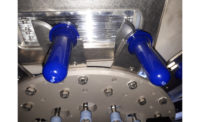The dairy packaging sector is breaking out of its doldrums. While packaging has been historically slow to evolve, greater shopper interest in convenience and sustainability, and a sharper focus by brands on product appearance and freshness, are changing the landscape. Processors are leveraging more environmentally sound and visually attractive containers that are available in a wider variety of shapes and sizes.
"Consumers expect more from brands," says Mai Doherty, category leader – dairy and nutrition, U.S. and Canada, for Tetra Pak, a Denton, Texas-based packaging supplier. "Not just in the products they offer, but in the packaging, which is one of the best ways for brands to stand out from the competition while meeting the needs of their customers."
She notes that newer packages are likely to include clear, concise messaging to convey product benefits — for example, callouts stating “less sugar” or “more protein" — and feature novel shapes and designs that make products easier to hold, pour or drink without spilling.
Also more popular is dairy packaging with easy-open and reclose capabilities — in individual portion sizes for snacking and larger bulk containers for club stores, says Dave Favret, product manager for Harpak-ULMA Packaging LLC, a Taunton, Mass.-based equipment supplier.
Shrinking households, meanwhile, are contributing to the production of smaller packages, Doherty states, noting that gallon-size milk container use is declining with newer milk options trending toward half-gallon sizes.
Indeed, dairy packaging in general is shifting to smaller containers, including single-serve sizes for such products as yogurt and cottage cheese, which shoppers can more easily consume as snacks or with lunch, says Mike McCann, packaging specialist for Reiser, a Canton, Mass.-based food packaging equipment provider. Such sizes are helping to shake up dairy packaging, which "has stayed 'me too' for a long time," he says.
"Packaging is being driven by consumers who want products that are packaged for convenient use," agrees Chip Simenz, vice president of sales for Covington, Ky.-based supplier ProMach Inc.'s Matrix brand of flexible packaging. Flexible options include stand-up pouches, four-sided sachets and containers with windows that display products, he states, along with such newer concepts as sour cream in an easy-squeeze package with a reclosable top.
More efficiency-oriented retailers, meanwhile, also are seeking shelf-ready packaging, says Michael Cothran, North Central regional sales manager for BluePrint Automation Inc., a South Chesterfield, Va.-based supplier of case packers and tray packing solutions.
"They want to receive cases and stock them quickly while still maintaining an appealing appearance to customers," he states.
Secondary dairy packaging is changing as adoption of shelf-ready designs grow, adds Dan Altman, vice president of sales and marketing at St. Paul, Minn.-based equipment supplier Delkor Systems Inc. "Retailers are converting more of their shelves to retail-ready to maximize shelf space and improve in-store operations," he says.
A material world
Film and other packaging materials also are becoming more significant as sustainability increases in importance among shoppers, retailers and brands.
"Never in our company’s history have we seen such a shift as the desire of consumers to make purchasing choices they perceive as better for the environment," which include packaging that uses fewer materials and has a lower carbon footprint, says Murray Bain, vice president of marketing for Stanpac, a Smithville, Ontario-based dairy and beverage packaging manufacturer.
He notes that Stanpac is introducing alternate materials for sustainability in its ice cream packaging, which includes paperboard from sustainably managed trees and coatings for barrier and sealing properties that are derived from plants instead of fossil fuels.
Clear polyethylene terephthalate (PET) bottles that enable greater recycling also are becoming more popular, says Rich Keenan, national sales manager for PDC International Corp., a Norwalk, Conn.-based provider of shrink sleeve labeling, tamper-evident neck banding and shrink tunnel technology. Processors are moving to crystallizable PET recycling shrink label film, which is designed to be recycled with container resin, he says, noting that such designs use ink that releases off the film and does not stain the PET flake during the recycling process.
In addition to environmental triggers, processors are responding to growing shopper interest in products with nostalgic elements during the COVID-19 pandemic by shifting to paper-based packaging from plastic, says Glenn Emory, general manager, North America, for Weidenhammer New Packaging, a Kansas City, Mo.-based supplier of metal-free packaging and machinery for the bulk frozen dessert market.
"Consumers are longing for wholesome and familiar items," he states. "Ice cream, for instance, is an emotional product, and the use of paper packaging becomes more of a go-to material."
Brands also are seeking packaging materials that enable products to stand out in a crowded market, says JP Moran, president of LMI Packaging, a Pleasant Prairie, Wis.-based manufacturer of lids and pressure-sensitive labels. Such items include foil that does not tear when peeling or cut consumers' hands and is esthetically pleasing because it peels off in one piece, he says.
More processors, meanwhile, are switching from flexible hanging containers to rigid and semi-rigid modified atmosphere packaging (MAP) for cheese, says Carlo Bergonzi, Harpak assistant product manager.
"Cheese in flexible packages is often regarded as a commodity," he states. "Processors are trying to separate themselves by providing MAP packaging that has a premium appearance and feel."
Cheese processors also are increasingly using generic unprinted film and applying labels to designate different products, says John O'Donnell, region sales manager for ProMach's EPI labeling equipment brand.
"Each customer may want different information on the package, which makes it costly and difficult to stock preprinted films for a wide variety of customer needs," he says. "You can print labels considerably faster than having new film."
Cheese wrapping using shrink packaging from thermoforming machinery is more prevalent as well, says Christian Uebele, product market manager – thermoformers for Multivac Inc., a Kansas City, Mo.-based packaging machine supplier. He notes that the wrap creates the same tight, clean appearance of a shrink pouch, but there are fewer rejections during processing because of less threat of product contamination.
Don't go it alone
Dairy processors could better determine the most effective packaging for their specific products by soliciting input from packaging machinery and film suppliers, as well as consumers, Simenz says. Key considerations are being able to package products efficiently while not cutting into profits, he says.
Indeed, Emory notes that processors should contemplate total operational costs when making packaging decisions, including material expenses and machinery uptime, serviceability and life cycles. "There is never an absolute perfect packaging solution, so the more a processor considers all the factors, the better the ultimate choice will be for the long-term viability of their business," he says.
In addition, processors could analyze packaging in other business markets in their decision-making, including those outside of food, says Michael Sachau, market development director for TC Transcontinental Packaging, a Chicago-based flexible packaging supplier. Nonfood sectors, he notes, often will be first to adopt a new attribute or style that eventually will work its way into food retail packaging.
Processors should maintain an "innovative mindset" by testing new products and packages with consumers "to see what works with their ever-shifting requirements," while also garnering input from packaging suppliers who "may have insights on new technologies or materials that could change what is possible," Sachau states.
Getting parties to alter their package manufacturing and retail buying habits, however, can be difficult, Doherty says.
"Many processors have been packaging products a certain way for years and have perfected that route to market, so making a change can require an investment of time and money," she states. "On the flip side, many consumers are used to purchasing dairy products in familiar packaging. Change can take time and effort."
Emory, for instance, says the dominant style of bulk ice cream packaging has gone unchanged since 1930, and while some processors desire upgrades, "nearly a century of doing the same thing makes it difficult to actually make the change."
Yet offering shoppers novel product and packaging options "is a great way to reinvigorate a brand, appeal to new audiences and drive sales," Doherty notes.
Key an eye on the bottom line
A major packaging challenge facing dairy processors, however, is managing costs while improving performance, Simenz says. "Some of the new options such as sustainable or recyclable films, stand-up pouches or flat-bottom or gusseted packaging can be more expensive, and some may require changing how the product comes down the processing line," he states.
While it is advantageous for processors to invest in machines that have the flexibility to run many different package styles on the same line, Altman notes that systems that "have minimal downtime when changing from significantly different package styles are hard to find."
Incorporating machinery that can effectively package products of different viscosities and textures on the same line is another challenge, says Jonathan Viens, sales and marketing manager for Osgood Industries LLC, an Oldsmar, Fla.-based manufacturer of custom-made machines that fill, seal and cap preformed containers and cups.
Processors using paper cups also will face production issues, as paper bends and tears more easily than plastic, resulting in malfunctions, he says, adding that comprehensive testing of machine handling and processability are essential.
"They ensure that both the paper cups and lids are destacked safely and the cups are sealed tightly," Viens says. "By adding new ways of thinking and technological innovations, processors can determine and exploit additional paper packaging applications."
Forging partnerships with packaging manufacturers, meanwhile, could help processors "navigate the changing landscape and be strategic throughout the packaging process," Moran says.
Adapt to the times
Processors also should make change a priority and provide the necessary time, energy and funding to implement the most effective processing systems, Bain states.
"A lot of testing and evaluations need to occur to ensure product quality and safety are not affected when something new or different comes along," he adds.
Opportunities are increasing, as "it is not uncommon to see a package style change every six to nine months for a lot of products, where it used to be five to 10 years," says Aaron Philips, vice president of operations for ProMach's Quest robotic technology brand. "Processors need to be able to pivot production-wise, and it is huge to have that flexibility."
Such pivoting is occurring in response to COVID-19, as food safety is becoming more important to many consumers than sustainability, says Vince Tamborello, vice president of business development for ProMach's Benchmark packaging equipment brand.
While sustainability was "the hottest trend in the industry," more operators are giving their main attention to single-serve individually wrapped packaging at both retail and foodservice, he states.
"The trend is accelerating," Tamborello adds.








